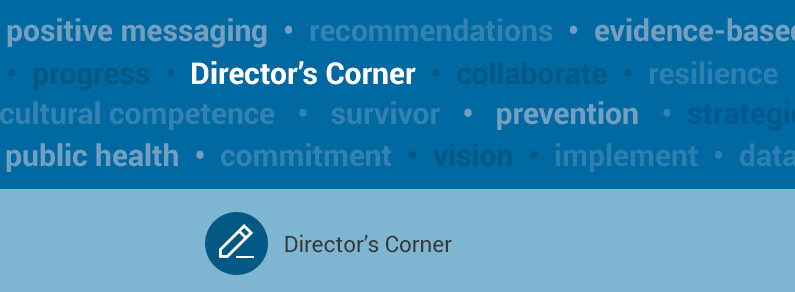Learning from California
April 07, 2014

Anara lives and works in California
The State of California has a long history of innovation in suicide prevention. In 1958 Edwin Schneidman founded the nation’s first comprehensive suicide prevention center in Los Angeles. The first community-based telephone crisis center in the United States was established in San Francisco in 1962.

This history of innovation has continued. In 2004, California’s voters passed the Mental Health Services Act. This landmark legislation imposes a 1 percent tax on personal income in excess of $1 million. The resulting funds are devoted to mental health, with a significant portion devoted to prevention and early intervention. The funds go directly to counties to administer mental health programs. In 2008, counties agreed to pool resources via the California Mental Health Services Authority (CalMHSA) for statewide activities, including support for crisis centers and hotlines, gatekeeper training, and social marketing. This has created a unique model for conducting statewide suicide prevention.
Several of these statewide activities may be of particular interest to the rest of the nation because of the ways that they engage technology to advance the cause of suicide prevention.
The Directing Change Student Video Contest challenges high school students to create video public service announcements on suicide prevention or stigma reduction. In its first year, the competition yielded 371 entries from 142 schools. Winners were announced in each of the eleven regions in the state, as well as state winners at an award ceremony in the state capital. More than 425 entries have been submitted for the second year.
Perhaps most importantly, the competition has created partnerships, promoted safe messaging, and expanded school suicide prevention programming:
• The program has partnered with the California County Superintendents Educational Services Association student mental initiatives and with the CalMHSA stigma and discrimination reduction campaign.
• Every high school in the state has received an informational packet about suicide prevention, safe messaging, and how to conduct school-based suicide prevention activities. Each school that submits student entries is eligible to win prizes of school-based suicide prevention programs, donated by program producers from among those listed in the Best Practices Registry.
• Judges for the competition are trained on warning signs and risk factors, as well as safe messaging. More than 100 journalists, filmmakers, and mental health professionals acted as judges in the first year.
• Impact on judges, teachers, and students was measured through surveys after the first competition. More than 90 percent of the students said the contest had changed how they thought about mental health and suicide prevention. All of the student advisors said the contest had increased students’ understanding toward people who are experiencing tough times. And 95 percent of judges reported that they would likely use safe messaging guidelines in the future. The competition is now in its second year, has newly partnered with NAMI California, and has expanded to include University of California campuses.
You can learn more about the competition at www.directingchange.org
My3App is a safety planning smartphone app developed for iPhone and Android phones. The app helps individuals at risk for suicide quickly connect with their support networks and create safety plans that are always readily available to them. The app is being promoted in California through crisis centers, local organizations, and providers who can counsel their patients and clients on its use.
The Common Metrics Initiative is a joint project of ten crisis centers in the state, which have begun to pool their call data. The centers have identified and developed a common set of metrics that are reported collaboratively, allowing for aggregate analysis across the state. Data elements gathered include demographics, reason for the call, call volume, risk level, follow-up contact, and caller satisfaction. Ongoing analysis of these metrics will help to identify populations that are under-served, and to show what needs exist. The first report is available.
The first three years of statewide suicide prevention activities since the passing of the Mental Health Services Act are drawing to a close, but the CalMHSA county mental health directors have recently approved a plan for sustaining statewide projects by continuing to dedicate funds to collectively achieve what few of them could do on their own.
